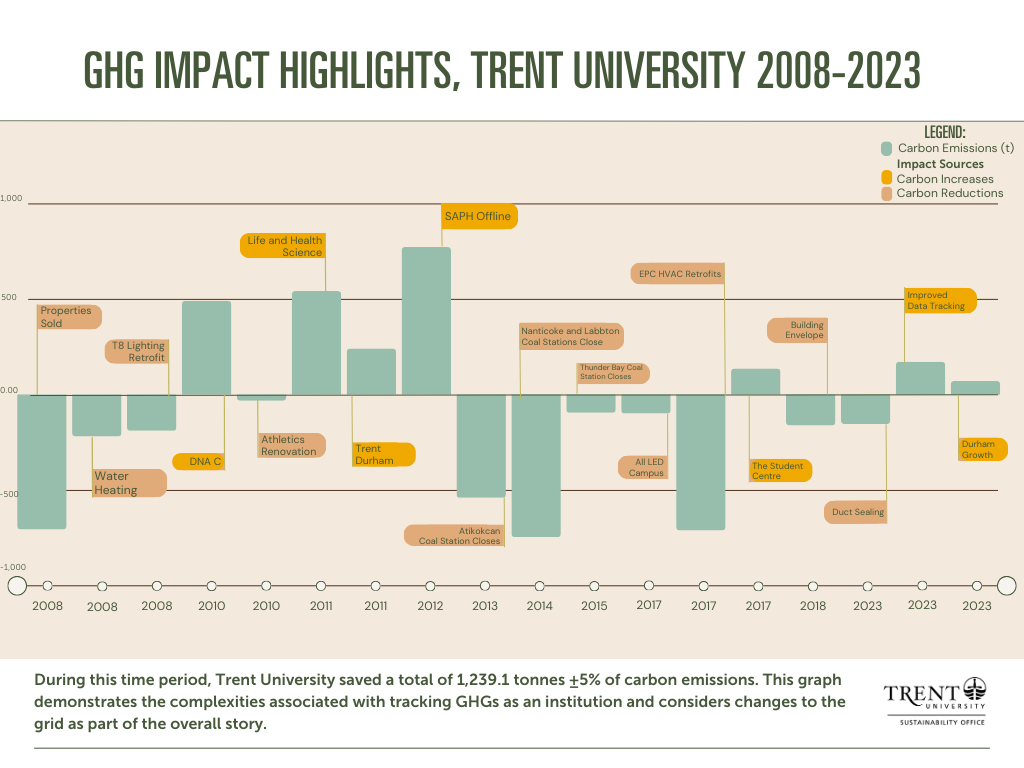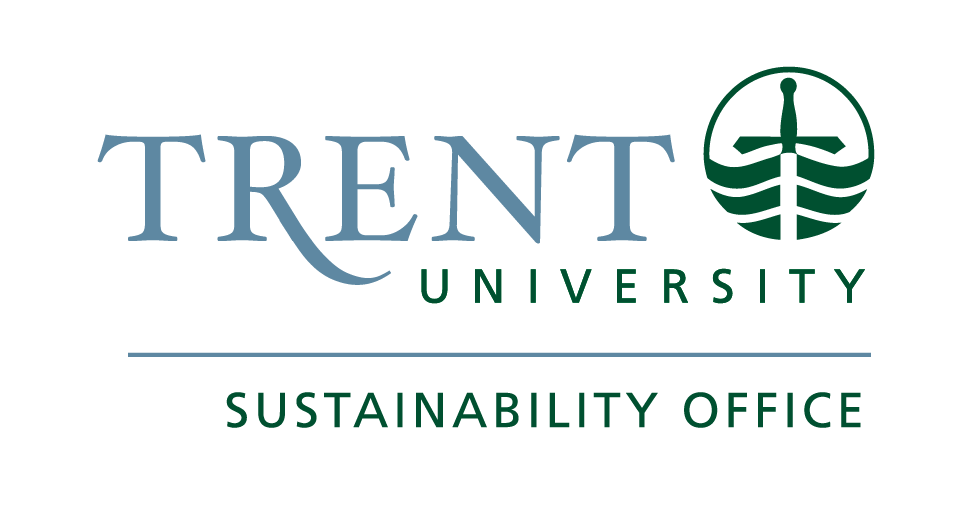Green House Gas Emissions at Trent University
One of the services offered by the SO is completing Trent's GHG inventories. Faculty and students often request this data to bring real-world scenarios into the classroom. We track scope one and two emissions from all sources, aligning the practice with the GHG Protocol. All Ontario institutions must report a modified set to the Ministry of Energy and Electrification. Trent’s Scope 1 and 2 GHGs for 2023 are 6,694t, down ~20% from 20071.
As an institution, it is important to understand our absolute emissions and we offer our raw utility data annually in a transparent spreadsheet including all of our GHG calculations. In the SO we find that interest and understanding of projects and programs impacting reductions live in the details. We share some of our insights below and invite you to dive deeply into our data to discover your own.
Note: The estimated 20% reduction is from 2007 to the present without adjustment. This assessment uses absolute data. When comparing to historical data, we often exclude the impact of former on-site hydro generation to align with current practices and sector norms. We do this by estimating emissions as if all of our electricity in the reference year had been purchased from the Ontario grid, as it is today. This method estimates the reduction over the same period to be approximately 34%.
Notable insights related to Trent’s building stock during this time are as follows:
- Growing Campus: Trent’s built space has increased by ~14% since 2007, while GHG emissions have dropped by ~20%. (Illustration for download)
- Athletics Centre (Addition, 2010) - The addition to Trent’s athletics facility earned LEED Silver Certification. This project expanded the center by 50% yet reduced natural gas use in the entire building by more than 10%, with water use dropping by a third. We expect electricity would have similar impacts but did not have building-level metering at the time.
- Life and Health Sciences (2010/11)—Life and Health Sciences, our largest science building, earned LEED Gold Certification. Although science facilities are typically energy-intensive, this building represents 11.6% of our built space and accounts for 12% of our GHGs. Despite its specialty use, its efficiency keeps its GHG intensity very close to our campus average.
- Forensics Crime Scene Facility - Trent’s newest building was built to be certified Zero Carbon by the International Living Futures Institute. This certification acknowledges two key aspects of building carbon: operational and embodied.
- Operational Carbon: The building's solar panels generate about 30% more energy than the building uses, resulting in a net GHG reduction despite adding to our built space.
- Embodied Carbon: By strategically selecting building materials and prioritizing plant-based and recycled materials, the building stores more carbon in its physical structure than was used to extract and manufacture the construction materials used to build it.
- GHGs as a Net Result of a Multitude of Factors: Over the years, significant factors in addition to those above have resulted in increases and decreases in Trent's net GHGs. We have included a supplement to help with a more robust understanding.
Looking Ahead - We are pleased to report on our progress, and our sights are set forward. Our 2024 plan outlines our commitment to achieving a low-carbon campus with a long-term net-zero emissions goal. We are a small institution, and our story is complex. Our institution continues to lead by example with projects like our innovative power storage solutions in the Battery Energy Storage System (BESS) and our groundbreaking Zero Carbon Forensics building. Our next steps include updating and refining our carbon reduction strategy and seeking funding to implement more projects.



